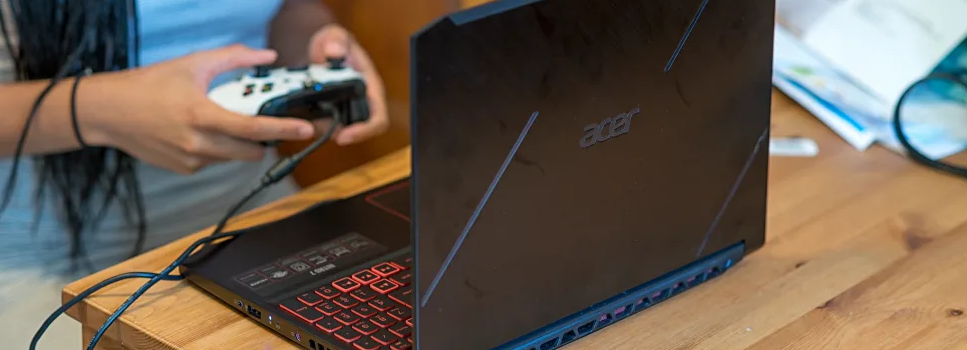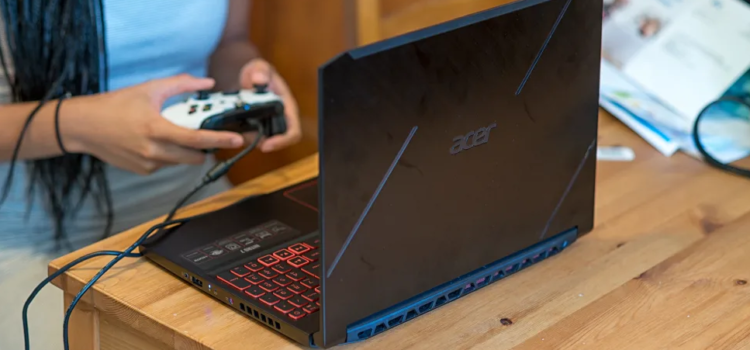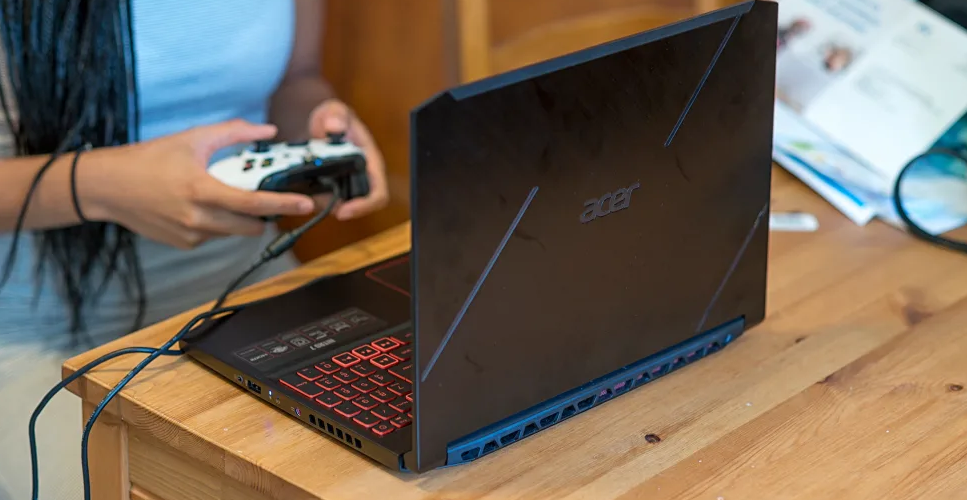


Gone are the days where you had to shell out thousands of dollars for a proper gaming rig. Thanks to smaller chips and lighter hardware, you can now buy a gaming powerhouse in laptop form for a grand or less. Not sure where to begin? Don’t sweat it. Whether you’re into mind-boggling puzzlers or first-person shooters, we’ve got you covered.
From graphics capabilities to battery life, we tested the best budget gaming laptops to figure out what’s worth the money. After hours of testing, the Acer Nitro 7 (available at Amazon for $1,099.98) ended up nabbing our top spot. With its powerful internals and affordable price point, it’s a great pick for gamers on a tight budget. If the Nitro 7 isn’t your cup of tea, don’t worry, we’ve got plenty of other options to chose from.
These are the best gaming laptops under $1,000 we tested ranked, in order:
- Acer Nitro 7
- Dell G5 15
- Dell Inspiron 15 7577
- Acer Nitro 5
- Asus Republic of Gamers Strix Scar Edition
- Lenovo Legion Y520
How We Tested

The Tester
I’m Florence Ion, a contributor here at Reviewed. Over a decade ago, I started my career interning for a PC magazine and benchmarking powerful machines. But gone are the days I used to put together my gaming rig. I’ve since switched over to laptops because they’re more portable and they save me a ton of room in my tiny office. And gaming laptops, in particular, offer everything I need to run my business and engage in a bit of playtime when I’m not feeling particularly motivated.
For me, a good gaming laptop shouldn’t weigh a ton, has to have a decent screen, and can handle playing my favorite games. I’m continually replaying The Elder Scrolls 5: Skyrim, and though I’m not so good with games like Overwatch, I enjoy the storytelling of games like Rise of the Tomb Raider. Since the gaming laptop is my primary computer, I tend to use it docked and tethered to a power supply. But I understand the need for gaming on the go, and I made sure to test each laptop’s battery both for productivity and for mobile gameplay.
The Tests
To help determine a gaming laptop’s ability as a portable powerhouse, we first attempt to push each machine’s processor to its brink. These tests help us determine the responsiveness of the laptop and whether it’ll be able to handle streaming or running Google Chrome in the background with simultaneous gameplay. We then run a series of tests on the graphics card to figure out how fast graphics and images rendered on a particular machine, and whether your gameplay will run smoothly.
Since gaming laptops are smaller and thinner than full gaming rigs, we tested the heat output and fan noise of each machine during sustained gameplay. If you plan to use a gaming laptop for double-duty, you might find the sound of whirring fan blades to be a bit distracting.
Once that’s established, we run a battery test overnight. We unplug the laptop and set the display brightness to 200 nits and then we cycle through popular websites like Discord and Twitch until the battery dies. This is how we figure out how much action we can get on a single charge. The idea is to emulate daily tasks. Even if you’re buying this laptop solely to play Overwatch, you’ll also likely use it for web browsing.
Lastly, we consider the overall build quality like how sturdy the hinges feel and if there’s any flex to the display. We also take into account how light the machine is—under five pounds is ideal—and how many ports it offers.
What You Should Know About Budget Gaming Laptops
How Do I Pick a Price Point?
It used to be impossible to find a competent gaming machine under a grand, but not anymore. Now you can find plenty of options starting with decent processors and enough graphics power to fuel your third playthrough of The Witcher 3. If you want to spend a little over a grand, you can nab our best pick, the Acer Nitro 7.
Anything over a grand belongs in the mid-range category, though that label doesn’t necessarily refer to a laptop’s specifications. You’ll be able to find machines with current generation hardware, decent battery life, lots of memory, and plenty of storage space. Some last-generation gaming laptops may also appear in this price point.
Laptops that cost well over a grand are considered top performers because they’re equipped with top-tier specs. Machines in this category also tend to offer better display options, and in some instances, allow you to upgrade components down the line.
What Kind of Processor and Graphics Card Do I Need?
When you start your search for gaming laptops, you’ll notice that there isn’t much variety when it comes to the internal hardware. The most popular graphics cards these days are made by Nvidia. Companies like AMD also manufacture high-performing graphics cards, but most of the laptops we tested have Nvidia hardware powering their insides.
The latest Nvidia graphics cards are the 10-series, 16-series, and 20-series. The 10-series includes 1060, 1070, and 1080 cards. These tend to be more budget-friendly and they’re capable of handling the latest games at high frame rates as well as virtual reality experiences (provided you have enough RAM). Like the other cards mentioned here, they’re also compatible with Nvidia proprietary G Sync, which helps manage smooth frame rates of up to 240Hz.
The 16-series includes the 1660 Ti and 1650 and are both based on newer architecture than the 10-series. They perform well at 1080p and 1440p resolutions and offer better memory bandwidth so that graphics continually render smoothly at high frame-rates. The only caveat of the 16-series is that they tend to ship with less virtual memory, which can become a future-proofing issue down the line.
The 20-series include the RTX 2060, 2070, and 2080, and they’re considered some of the best cards in their class. The RTX in their name stands for ray tracing, which helps generate interactive images that react to lighting, shadows, and reflections, contributing to more immersive gameplay. Games like Metro Exodus support this rendering technology. The 20-series are also able to facilitate gaming on a 4K monitor, which you might consider if you’re springing for our best all-around gaming laptop picks.
The processor inside your gaming laptop won’t directly affect your gaming prowess, though this part of the configuration matters for day-to-day tasks and simultaneous streaming. Most of what you’ll find on our list come with Intel Core i7 chips, either last generation’s 8750H variant or the ninth-generation 9750H. There isn’t a significant difference in performance between the two, and you can save some money by foregoing the upgrade.
If you’re looking at budget gaming machines, you’re likely to run into Intel’s Core i5 processors, like the 9300H featured in our best overall pick. They’re capable chips, but you will see a performance difference as you push the machine to its capacity.
Does Display Size Matter?
The standard screen size for gaming laptops is 15.6-inches with 1080p resolution. It’s enough screen for partaking in action without carting around a laptop that’s breaking your back. There are 17-inch gaming laptops available, too, but if portability matters to you, you might want to avoid that much screen.
Refresh rates make the most significance on gaming laptops. The higher frame rate effectively smooths out gameplay and leads to less stuttering issues than on a standard monitor with a 60Hz refresh rate.




